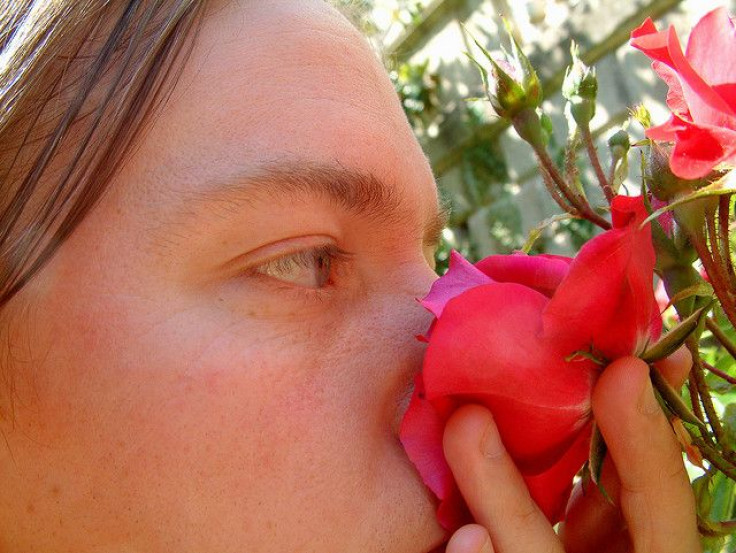What's In A Nose? Genetics Explains Why People Love Certain Smells

Think of your favorite flower... ? Odds are you love that flower because of its aroma, but what makes this blossom stand out for you but not for your friends? A simple answer may be that they can't smell it, according to new research in the journal Current Biology showing that genetic variations in the nose prevent some people from perceiving certain aromas.
"We were surprised how many odors had genes associated with them," said Dr. Jeremy McRae, a researcher at The New Zealand Institute for Plant & Food Research Ltd. "If this extends to other odors, then we might expect everyone to have their own unique set of smells that they are sensitive to."
To find traits that govern smell perception, the researchers scanned the complete genomes of nearly 200 people. In particular, they examined the genetic sequences of olfactory receptors, which are proteins that coat neurons in the nose and are responsible catching different fragrances.
Human have between 900 genes that encode olfactory receptors, which makes them the largest gene family in the body. Many can detect more than one scent, which allows us to perceive about 10,000 distinct odors.
The reseachers found that subtle variations in these genes are more common than others, which explains why some people have stronger attractions to certain smells. They tested 10 different scents and found people were genetically disposed to responding to four of them: malt (isobutyraldehyde), apple (β-damascenone), blue cheese (2-heptanone), and β-ionone, which smells floral to some people and is particularly abundant in violets.
"These smells are found in foods and drinks that people encounter every day, such as tomatoes and apples," said McRae. "This might mean that when people sit down to eat a meal, they each experience it in their own personalized way."
This preference was similar across cultures, with Asians, Europeans, and Africans all demonstrating the similar sensitivities.
The investigators also took a closer look at the preference for floral smells (β-ionone) and found the exact mutation in one odor receptor gene — OR5A1 — that made individuals better or worse at perceiving the scent.
Knowing the identity and prevalence of the genetic variants that dictate smells could help manufacturers open our worlds to new scents. Perfumiers could learn how to make sweeter fragrances. Movie makers might finally conquer smell-o-vision.
"Knowing the compounds that people can sense in foods, as well as other products, will have an influence on the development of future products," said co-author Dr. Richard Newcomb. "Companies may wish to design foods that better target people based on their sensitivity, essentially developing foods and other products personalized for their taste and smell."
Sources: Jaeger SR, McRae JF, Bava CM, et al. A Mendelian Trait for Olfactory Sensitivity Affects Odor Experience and Food Selection. Current Biology. 2013.
Jaeger SR, McRae JF, Bava CM, et al. Identification of Regions Associated with Variation in Sensitivity to Food-Related Odors in the Human Genome. Current Biology. 2013.



























